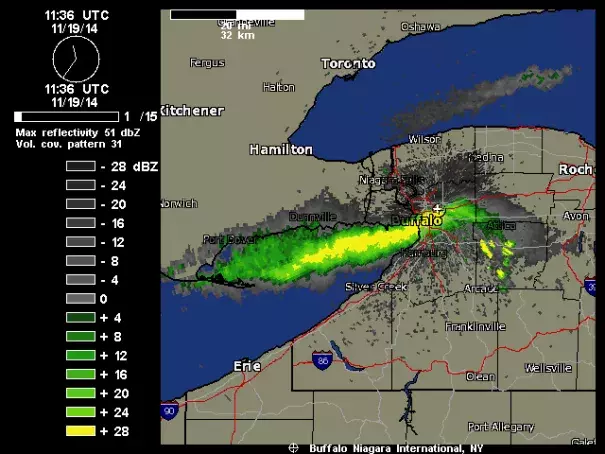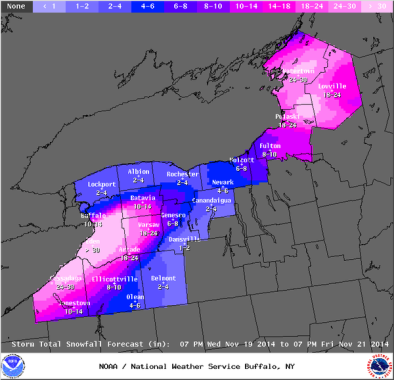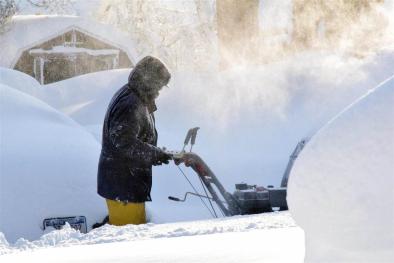Buffalo Belted With Five Feet of Snow; Is Jet Stream Weirdness to Blame?

This week's intense cold blast is being triggered by an unusually extreme jet stream pattern, featuring a sharp ridge of high pressure along the U.S. West Coast and a deep trough of low pressure diving to the south over the Central United States. This configuration allows cold air to spill out of the Arctic behind the trough into the Central U.S., and be replaced by anomalously warm air flowing northwards along the West Coast of the U.S. deep into the Arctic. This extreme jet stream pattern is due, in part, to the influence of Super Typhoon Nuri, which caused a ripple effect on the jet stream after the typhoon became one of the most powerful extratropical storms ever recorded in the waters to the west of Alaska eleven days ago. However, we've seen an unusual number of extreme jet stream patterns like this in the past fifteen years, which happens to coincide with the period of time we've been observing record loss of summertime Arctic sea ice and record retreat of springtime snow cover in the Arctic. Could it be that these changes in the Arctic are causing the wacky jet stream behavior of recent years? That's the theory being advanced by a number of prominent climate scientists
Related Content




